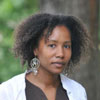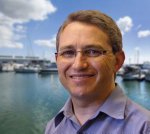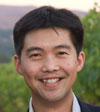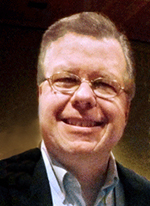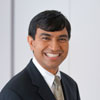
The World's Premier Conference for 3D Innovation
 |
Videos of many of the presentations at the conference are available for free viewing by clicking on the special "Video" icons |
Monday-Wednesday 15-17 February 2016
Hilton San Francisco Union Square Hotel, San Francisco, California, USA.
To be published open-access as part of the IS&T Proceedings of Electronic Imaging.
Part of IS&T's International Symposium on Electronic Imaging: Science and Technology
Sunday-Thursday 14-18 February 2016 ¤ Hilton San Francisco Union Square Hotel,
San Francisco, California, USA
[ Advance Program: Day 1, Day 2, Day 3, Keynote 1, Keynote 2, Demonstration Session, 3D Theatre, Discussion Forum ] [ Register, Short Course ]
|
|
| Monday 15th February 2016 |
| SESSION 1 Light-Field and Super-Multiview Displays Session Chair: Neil Dodgson, University of Cambridge (United Kingdom) |
Mon. 8:40 - 10:00 AM |
8:40 am: New visual coding exploration in MPEG: Super-MultiView and Free Navigation in Free viewpoint TV, Gauthier Lafruit, Université Libre de Bruxelles (Belgium); Krzysztof Wegner and Tomasz Grajek, Poznan University of Technology (Poland); Takanori Senoh, National Institute of Information and Communications Technology; Joël Jung, Orange Labs (France); Péter Kovács, Holografika (Hungary); Patrik Goorts and Lode Jorissen, Hasselt University; Beerend Ceulemans, Vrije Universiteit Brussel; Pablo Lopez and Sergio Lobo, Universidad Politécnica de Madrid (Spain); Qing Wang, Zhejiang University (China); and Masayuki Tanimoto, Nagoya Industrial Science Research Institute (Japan) [SDA-426]
  |
9:00 am: Application of light field displays to vision correction and accommodation support, Fu-Chung Huang, NVIDIA Research; Robert Konrad and Gordon Wetzstein, Stanford Univ. (United States) [Presentation Only] [SDA-424]
 |
9:20 am: Light field modulation using a double-lenticular liquid crystal panel, Hironobu Gotoda, National Institute of Informatics (Japan) [SDA-425]
  |
9:40 am: 3DTV: past, present and future, Neil Dodgson, Victoria University of Wellington (New Zealand) [Standby Paper] [Presentation Only] [SDA-600]
 |
| SD&A Conference Opening Remarks | Mon. 10:00 am - 10:10 pm |
| Coffee Break | 10:10 - 10:50 am |
| SESSION 2 360° 3D Session Chair: Gregg Favalora, VisionScope Technologies, LLC (United States) |
Mon. 10:50 am - 12:30 pm |
10:50 am: Multi-viewer autostereoscopic tabletop display with omnidirectional dynamic parallax barrier and novel time-multiplexed directional backlight, Hagen Seifert and Quinn Smithwick, Disney Research (United States) [SDA-427]
 |
11:10 am: 360-degree three-dimensional display with the virtual display surface, Hodaka Yamada, Kayo Yoshimoto, Hideya Takahashi, Osaka City Univ.; Kenji Yamada, Osaka Univ. (Japan) [SDA-428]
  |
11:30 am: Stereoscopic space map - A semi-immersive navigation interface for 3D multi-display presentations, Björn Sommer, Owen Kalutza, Andreas Hamacher, Tobias Czauderna, Matthias Klapperstück, David G. Barnes and Falk Schreiber, Monash Univ. (Australia); Niklas Biere, Bielefeld University; Marco Civico, Gymnasium Schloss Holte-Stukenbrock (Germany) [SDA-429]
  |
11:50 pm: Optical realization for the computer-generated cylindrical hologram, Munkh-Uchral Erdenebat, Erkhembaatar Dashdavaa, Ki-Chul Kwon, and Nam Kim, Chungbuk National University (South Korea) [SDA-430]
  |
12:10 am: Capturing and Rendering Light-Field Video: Approaches and Challenges, Tim Milliron, Alex Song, Lytro, Inc. (USA) [Presentation Only] [SDA-525]
 |
| Lunch Break | 12:30 - 2:00 pm |
|
| Coffee Break | 3:00 - 3:30 pm |
| SESSION 3 3D Content I Session Chair: Nicolas Holliman, University of Newcastle (United Kingdom) |
Mon. 3:30 - 3:50 pm |
3:30 pm: Linear optimization approach for depth range adaption of stereoscopic videos, Werner Zellinger, Bernhard Moser, Ayadi Chouikhi, Software Competence Center Hagenberg GmbH; Margrit Gelautz and Matej Nezveda, Technical Univ. Vienna; Florian Seitner, Emotion3D GmbH (Austria)
  |
| EI 2016 Symposium Reception | Mon. 5:00 - 6:00 pm |
This ever-popular event allows attendees to see large-screen examples of 3D content from around the world. Program announced at the conference. 3D glasses provided.
|
The annual informal dinner for SD&A attendees. An opportunity to meet with colleagues and discuss the latest advances. There is no host for the dinner. Information on venue and cost will be provided on the day at the conference. |
| Tuesday 16th February 2016 |
| SESSION 4 Human Factors and 2D to 3D Conversion Session Chair: Takashi Kawai, Waseda University (Japan) |
Tue. 8:40 - 10:20 am |
8:40 am: Towards perceptually coherent depth maps in 2D-to-3D conversion, Tanja Schausberger, Nicole Brosch, and Margrit Gelautz, Vienna University of Technology (Austria) [SDA-433]
  |
9:00 am: The effects of functional disparity on route memory in stereoscopic images, Sanghyun Kim, Michika Takahashi, katsumi watanabe, and Takashi Kawai, Waseda University (Japan) [SDA-434]
 |
9:20 am: Depth extraction from a single image based on block-matching and robust regression, Hyeongju Jeong, Kwanghoon Sohn, and Changjae Oh, Yonsei Univ. (South Korea) [SDA-435]
  |
9:40 am: Emotional arousal by stereoscopic images and the effects on time perception, Takashi Kawai, Risako Hama, and Masashi Horiuchi, Waseda Univ. (Japan) [SDA-436]
  |
10:00 am: Stereoscopic remote vision system aerial refueling visual performance, Marc Winterbottom and James Gaska, U.S. Air Force School of Aerospace Medicine; Charles Lloyd, Visual Performance LLC; Steven Wright and Steven Hadley (United States) [SDA-437]
  |
| Coffee Break | 10:20 - 10:50 am |
| SESSION 5 3D Image Quality and Visual Comfort Session Chair: John Merritt, The Merritt Group (United States) |
Tue. 10:50 am - 12:30 pm |
10:50 am: An adaptive blur in peripheral vision to reduce visual fatigue in stereoscopic vision, David Aurat, Olivier Hugues and Philippe Fuchs, Mines Paristech -- PSL; Laure Leroy, University Paris 8 (France) [SDA-438]
  |
11:10 am: Trends in S3D movies quality as evaluated on 105 movies and 10 quality metrics, Dmitriy Vatolin, Alexander Bokov, Mikhail Erifeev, and Vyacheslav Napadovsky, Lomonosov Moscow State University (Russian Federation) [SDA-439]
  |
11:30 am: Evaluation of the perception of dynamic horizontal image translation and a gaze adaptive approach, Stefan Eickelberg, TU Dortmund University (Germany) [SDA-440]
  |
11:50 am: Study on the influence of 3D motion characteristics on the blinking rate, Yuan Gao, Yue Liu, Yiwang Qian, and Yongtian Wang, Beijing Institute Of Technology (China) [SDA-441]
 |
12:10 pm: Visual fatigue during continuous viewing the 3D Movie, Danli Wang, Xinpan Yan Yang, and Haichen Hu, Institut of Software, CAS (China) [SDA-442]
 |
| Lunch Break | 12:30 - 2:00 pm |
|
| Coffee Break | 3:00 - 3:30 pm |
|
| SESSION 6 Autostereoscopic Displays Session Chair: Hideki Kakeya, University of Tsukuba (Japan) |
Tue. 4:30 - 5:30 pm |
4:30 pm: A high resolution aerial 3D display using a directional backlight (JIST-first), Hideki Kakeya and Shuta Ishizuka, University of Tsukuba (Japan) [SDA-444]
  |
4:50 pm: Electronical correction of misalignments between optical grid and pixel panel on autostereoscopic displays, Silvio Jurk, Mathias Kuhlmey, Bernd Duckstein, and René de la Barré, Frauhofer Heinrich-Hertz-Institute (Germany) [SDA-445]
 |
5:10 pm: 3D will be back but not as we know it, Tim Macmillan, David Newman, GoPro Inc (USA) [Presentation Only] [SDA-526]
 |
| ||
|
Demonstrations
A symposium-wide demonstration session will be open to attendees 5:30 to 7:30 pm Tuesday evening. Demonstrators will provide interactive, hands-on demonstrations of a wide-range of products related to Electronic Imaging. The session will have a focused "Stereoscopic Displays and Applications" area. The demonstration session hosts a vast collection of stereoscopic products providing a perfect opportunity to witness a wide array of stereoscopic displays with your own two eyes. |
| Wednesday 17th February 2016 |
| SESSION 7 3D Content II Session Chair: John Stern, Intuitive Surgical, Inc. (United States) |
Wed. 8:40 - 10:20 am |
8:40 am: An efficient approach to playback of stereoscopic videos using a wide field-of-view, Chris Larkee and John LaDisa, Marquette Univ. (United States) [SDA-447]
  |
9:00 am: Hybrid reality: using 2D and 3D together in a mixed mode display, Kurt Hoffmeister, Mechdyne Corp. (United States) [Presentation only] [SDA-448]
 |
The SD&A Discussion Forum is a great opportunity to hear a panel of stereoscopic luminaries discuss a topic of high stereoscopic relevance. Topic and speakers to be announced closer to the event. Please visit the conference website www.stereoscopic.org or join theSD&A Linkedin group for updates. |
| Coffee Break | 10:20 - 10:50 am |
| SESSION 8 3DIPM / SD&A: Stereoscopic Image Processing and Depth Mapping (Joint Session) Session Chairs: William Puech, University of Montpellier (France) and Michael Weissman, TrueVision Systems (USA) This session is jointly sponsored by: Stereoscopic Displays and Applications XXVII and 3D Image Processing, Measurement (3DIPM), and Applications 2016. |
Wed. 10:50 am - 12:30 pm |
10:50 am: Geometrically constrained sub-pixel disparity estimation from stereo images of the retinal fundus, Mohamad Kharboutly, Carlos Vazquez, Stéphane Coulombe, and Jacques De Guise, école de technologie supérieure (Canada) [SDA-034]
  |
11:10 am: 3D autostereoscopic display image generation using direct light field rendering, Young Ju Jeong and Hyunsung Chang, Samsung Advanced Institute of Technology (South Korea) [3DIPM-035]
  |
11:30 am: A new hole filling method based on 3D geometric transformation for synthesized image, Hak Gu Kim and Yong Man Ro, Korea Advanced Institute of Science and Technology (South Korea) [SDA-036]
 |
11:50 am: Blue noise sampling of surfaces from stereoscopic images, Frederic Payan, Jean-Luc Peyrot, and Marc Antonini, Laboratory I3S, University Nice - Sophia Antipolis and CNRS (France) - UMR 7271 (France) [3DIPM-037]
  |
12:10 pm: Curtin HIVE - Hub for Immersive Visualisation and eResearch, Andrew Woods, Curtin University (Australia) [Standby Presentation] [Presentation Only] [SDA-601]
 |
| Lunch Break | 12:30 - 2:00 pm |
|
| Coffee Break | 3:00 - 3:30 pm |
| SESSION 9 ERVR / SD&A: Virtual Reality and 3D (Joint Session) Session Chairs: Margaret Dolinsky, Indiana University (United States) and Chris Ward, Lightspeed Design, Inc. (USA) This session is jointly sponsored by: Stereoscopic Displays and Applications XXVII, and The Engineering Reality of Virtual Reality 2016. |
Wed. 3:30 - 5:30 pm |
3:30 pm: LEIA 3D: holographic reality, David Fattal, LEIA Inc. (United States)
 |
3:50 pm: Effect of inter-lens distance on fusional limit in stereoscopic vision using a simple smartphone head-mounted display, Hiroyuki Morikawa, Aoyama Gakuin University and Waseda Univiersity; Yoshihiro Banchi, Shota Tsukada, Yusuke Hasegawa, Suguru Takahashi and Takashi Kawai, Waseda Univiersity; Kaiji Ohta, International Christian University (Japan) [SDA-040]
  |
4:10 pm: Investigating intermittent stereoscopy: its effects on perception and visual fatigue, Ari Bouaniche and Laure Leroy, Université Paris 8 (France) [SDA-041]
  |
4:30 pm: Stereoscopy-based procedural generation of virtual environments, Manlio Scalabrin and Davide Gadia, University of Milan (Italy) [SDA-042]
  |
4:50 pm: Beyond Fun and Games: VR as a Tool of the Trade, Carolina Cruz-Neira and Dirk Reiners, Emerging Analytics Center, University of Arkansas at Little Rock (USA) [ERVR-043] [Presentation Only]
 |
| SD&A Conference Closing Remarks | Wed. 5:30 pm |
|
| Stereoscopic Displays and Applications XXVII Interactive Papers The following works will be presented at the EI 2016 Symposium Interactive Papers Session on Wednesday evening, from 5:30 pm to 7:00 pm. Refreshments will be served. |
Wed. 5:30 - 7:00 pm |
- Occlusion and error detection for stereo matching and hole-filling using dynamic programming, Eu-Tteum Baek and Yo-Sung Ho, Gwangju Institute of Science and Technology (GIST) (South Korea) [SDA-449]

- Comparison of visual discomfort in viewing 3D video with various contrast changes on stereoscopic 3D display, autostereoscopic display and HMD, Yoon-Suk Kang, The Webb Schools (United States); Sungho Cho, MASTERIMAGE 3D (South Korea) [SDA-450]

- An analysis of blue-light effect in reducing visual discomfort from watching stereoscopic 3D video, Yong-Woo Kim and Hang-Bong Kang, Catholic University of Korea (South Korea) [SDA-451]

- Retinal projection type 3D head-mounted display using an HOE lens array, Yasuhiro Takatsuka, Kayo Yoshimoto, and Hideya Takahashi, Osaka City Univ. (Japan) [SDA-452]

- Disparity remapping considering the perception of depth structure, Ikuko Tsubaki and Kenichi Iwauchi, Sharp Corp.; Hiroaki Shigemasu, Kochi University of Technology (Japan) [SDA-453]

- A novel approach of generating stereoscopic images using defocus, Tianteng Bi, Yue Liu, Dongdong Wong, and Yongtian Wang, Beijing Institute of Technology (China) [SDA-454]





